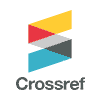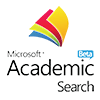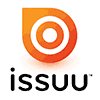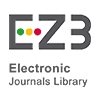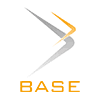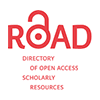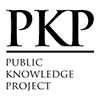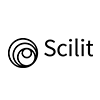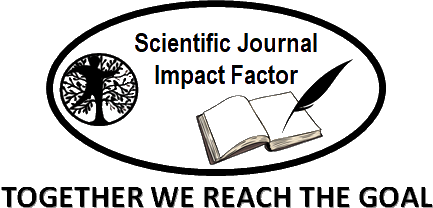Profile and Relationship of Minimum Competency Assessment-Type Mathematical Literacy, Creative Thinking, and Mathematics Anxiety in Solving Algebra
Abstract
This study aims to describe the profile and relationships among Minimum Competency Assessment (AKM)-type mathematical literacy, creative thinking, and mathematics anxiety of junior high school students in solving algebra problems in Yogyakarta City. The study employed a survey method with a quantitative approach, involving 397 eighth grade students selected through proportional stratified random sampling. The study instruments included a mathematics anxiety questionnaire, creative thinking test, AKM-type mathematical literacy test, and a questionnaire on factors causing mathematics anxiety. The instrument’s validity was examined using content validity (through expert judgment) and construct validity with Confirmatory Factor Analysis (CFA), whereas its reliability was assessed using Cronbach’s alpha coefficient. The results showed that all instruments were valid and reliable. Data were analyzed using interval estimation and path analysis. The results showed that: (1) The mathematics anxiety of junior high school students in Yogyakarta City was in the moderate criteria; (2) The creative thinking ability of junior high school students in Yogyakarta City was in the very low criteria; (3) The mathematical literacy ability of junior high school students in solving AKM-type problems was in the criteria of requiring special intervention; (4) The factors that cause the highest level of mathematical anxiety in junior high school students in Yogyakarta City are environmental factors and intellectual factors; (5) There is a negative relationship and a direct influence between mathematical anxiety and creative thinking; (6) Creative thinking is positively associated with and directly influences mathematical literacy; and (7) Mathematical anxiety is negatively associated with and directly influences mathematical literacy, as well as an indirect effect mediated by creative thinking.
Keywords
Full Text:
PDFReferences
Acharya, B. R. (2017). Factors Affecting Difficulties in Learning Mathematics by Mathematics Learners. International Journal of Elementary Education, 6(2), 8. https://doi.org/10.11648/j.ijeedu.20170602.11
Aditya, S., Mulyono, & Ernawati, I. (2018). Meningkatkan Kemampuan Operasi Dasar Aljabar Kelas X Melalui PBL Berpendekatan Algebraic Reasoning. Jurnal UNNES, 1, 304–308.
Agasi, G. R., Wahyuono, Y. D., & Rudhito, M. A. (2017). Junior High School Students’ Ability to Apply Algebra in Real-World Problems. International Journal of Indonesian Education and Teaching, 1(2). https://doi.org/https://doi.org/10.24071/ijiet.v1i2.662
Albab, A. U., & Wangguway, Y. (2020). Profile of students’ creative and innovative thinking in solving open-ended mathematics problems about the coffee plantation. Journal of Physics: Conference Series, 1538(1). https://doi.org/10.1088/1742-6596/1538/1/012071
Anugrah, T. M., Kusmayadi, T. A., & Fitriana, L. (2019). Mathematics anxiety in dealing math exams. Journal of Physics: Conference Series, 1157(3). https://doi.org/10.1088/1742-6596/1157/3/032101
Arista, E. D. W., & Mahmudi, A. (2020). Kemampuan berpikir kreatif matematis dalam penyelesaian soal open-ended jenis PISA berdasarkan level sekolah. Pythagoras: Jurnal Pendidikan Matematika, 15(1), 87–99. https://doi.org/10.21831/pg.v15i1.34606
Asmara, A. S., Waluya, S. B., & Rochmad. (2017). Analisis Kemampuan Literasi Matematika Siswa Kelas X Berdasarkan Kemampuan Matematik. Scholaria:Jurnal Pendidikan Dan Kebudayaan, 7(02), 135–142.
Astuti, Waluya, S. B., & Asikin, M. (2020). the Important of Creative Thinking Ability in Elementary School Students for 4.0 Era. International Journal of Educational Management and Innovation, 1(1), 91. https://doi.org/10.12928/ijemi.v1i1.1512
Azizah, L. N., Mahmudi, A., & Retnawati, H. (2019). Profile of students’ mathematics anxiety. Journal of Physics: Conference Series, 1320. https://doi.org/10.1088/1742-6596/1320/1/012105
Beyaztaş, D. İ., & Bostancı, Y. (2023). Investigating the Relationship Between Mathematics Anxiety and Mathematics Achievement. Kastamonu Education Journal, 31(3), 498–512. https://doi.org/10.24106/KEFDERG
Buckley, S., Reid, K., Goos, M., Lipp, O. V., & Thomson, S. (2016). Understanding and addressing mathematics anxiety using perspectives from education, psychology and neuroscience. Australian Journal of Education, 60(2), 157–170. https://doi.org/10.1177/0004944116653000
Fetterly, J. (2020). Fostering Mathematical Creativity While Impacting Beliefs and Anxiety in Mathematics. Journal of Humanistic Mathematics, 10(2), 102–128. https://doi.org/10.5642/jhummath.202002.07
Gabriel, F., Buckley, S., & Barthakur, A. (2020). The impact of mathematics anxiety on self-regulated learning and mathematical literacy. Australian Journal of Education, 64(3), 227–242. https://doi.org/10.1177/0004944120947881
Handayani, M., Perdana, N. S., & Ukhlumudin, I. (2021). Readiness of Teachers and Students to Take Minimum Competency Assessments. Proceedings of the International Conference on Educational Assessment and Policy (ICEAP 2020), 545(Iceap 2020), 73–79. https://doi.org/10.2991/assehr.k.210423.067
Hayati, T. R., & Kamid. (2019). Analysis of Mathematical Literacy Processes in High School Students. International Journal of Trends in Mathematics Education Research, 2(3), 116–119. https://doi.org/10.33122/ijtmer.v2i3.70
Hiller, S. E., Kitsantas, A., Cheema, J. E., & Poulou, M. (2022). Mathematics anxiety and self-efficacy as predictors of mathematics literacy. International Journal of Mathematical Education in Science and Technology, 53(8), 2133–2151. https://doi.org/10.1080/0020739X.2020.1868589
Irfan, M. (2017). Analisis Kesalahan Siswa dalam Pemecahan Masalah Berdasarkan Kecemasan Belajar Matematika. Kreano, Jurnal Matematika Kreatif-Inovatif, 8(2), 143–149. https://doi.org/10.15294/kreano.v8i2.8779
Kurniawati, N. D. L., & Mahmudi, A. (2019). Analysis of mathematical literacy skills and mathematics self-efficacy of junior high school students. Journal of Physics: Conference Series, 1320(1). https://doi.org/10.1088/1742-6596/1320/1/012053
Maharani, N., Suratno, S., & Sudarti. (2020). The analysis of creative thinking skills of junior high school students in learning natural science on environmental pollution materials with different academic skills. Journal of Physics: Conference Series, 1465(1). https://doi.org/10.1088/1742-6596/1465/1/012032
Megawati, L. A., & Sutarto, H. (2021). Analysis Numeracy Literacy Skills in Terms of Standardized Math Problem on a Minimum Competency Assessment. Unnes Journal of Mathematics Education, 10(2), 155–165. https://doi.org/10.15294/ujme.v10i2.49540
Ng, C. T., Chen, Y. H., Wu, C. J., & Chang, T. T. (2022). Evaluation of math anxiety and its remediation through a digital training program in mathematics for first and second graders. Brain and Behavior, 12(5), 1–17. https://doi.org/10.1002/brb3.2557
Nisa, F. K., & Arliani, E. (2023). Junior high school students’ mathematical literacy in terms of mathematical self-efficacy. Jurnal Elemen, 9(1), 283–297. https://doi.org/10.29408/jel.v9i1.7140
Nugroho, S. W. P., Riyadi, & Triyanto. (2020). Analysis of Students’ Creative Thinking Skill in Solving Algebra Problem. Journal of Physics: Conference Series, 1539(1). https://doi.org/10.1088/1742-6596/1539/1/012086
O’Leary, K., Fitzpatrick, C. L., & Hallett, D. (2017). Math anxiety is related to some, but not all, experiences with math. Frontiers in Psychology, 8(DEC), 1–14. https://doi.org/10.3389/fpsyg.2017.02067
Orbach, L., Herzog, M., & Fritz, A. (2019). Relation of state-and trait-math anxiety to intelligence, math achievement and learning motivation. Journal of Numerical Cognition, 5(3), 371–399. https://doi.org/10.5964/jnc.v5i3.204
Pusmenjar. (2020). AKM dan Implikasinya pada Pembelajaran. In Pusmenjar.
Puspitasari, L., In’am, A., & Syaifuddin, M. (2018). Analysis of Students’ Creative Thinking in Solving Arithmetic Problems. International Electronic Journal of Mathematics Education, 14(1), 49–60. https://doi.org/10.12973/iejme/3962
Qadri, L., Ikhsan, M., & Yusrizal, Y. (2019). Mathematical Creative Thinking Ability for Students Through REACT Strategies. International Journal for Educational and Vocational Studies, 1(1), 58. https://doi.org/10.29103/ijevs.v1i1.1483
Safitri, A., & Retnawati, H. (2020). The estimation of mathematics literacy ability of junior high school students with partial credit model (pcm) scoring on quantity. Journal of Physics: Conference Series, 1581(1). https://doi.org/10.1088/1742-6596/1581/1/012030
Sari, R. H. N., & Wijaya, A. (2017). Mathematical literacy of senior high school students in Yogyakarta. Jurnal Riset Pendidikan Matematika, 4(1), 100–107. https://doi.org/10.21831/jrpm.v4i1.10649
Sepriyanti, N., Nelwati, S., Kustati, M., & Afriadi, J. (2022). the Effect of 21St-Century Learning on Higher-Order Thinking Skills (Hots) and Numerical Literacy of Science Students in Indonesia Based on Gender. Jurnal Pendidikan IPA Indonesia, 11(2), 314–321. https://doi.org/10.15294/jpii.v11i2.36384
Slyamkhan, M., Ganeeva, A., & Dorel, L. (2022). Interrelation of levels of mathematical literacy in conditions of distance learning. World Journal on Educational Technology: Current Issues, 14(3), 757–767. https://doi.org/10.18844/wjet.v14i3.7212
Solihin, N., Wahidin, W., & Hindriana, A. F. (2023). Development of AKM Class: Analysis Correlation of AKM Value on Students Logical Thinking Skills of 8 Grade Junior High School. Journal of Education Research and Evaluation, 7(1), 108–114. https://doi.org/10.23887/jere.v7i1.39100
Suren, N., & Ali Kandemir, M. (2020). The effects of mathematics anxiety and motivation on students’ mathematics achievement. International Journal of Education in Mathematics, Science and Technology, 8(3), 190–218. https://doi.org/10.46328/IJEMST.V8I3.926
Susanta, A., Sumardi, H., & Susanto, E. (2022). Students’ mathematical literacy ability in solving story problems. Jurnal Didaktik Matematika, 2633(2011), 343–357. https://doi.org/https://doi.org/10.24815/jdm.v9i2.26741
Szczygieł, M., & Pieronkiewicz, B. (2022). Exploring the nature of math anxiety in young children: Intensity, prevalence, reasons. Mathematical Thinking and Learning, 24(3), 248–266. https://doi.org/10.1080/10986065.2021.1882363
Ulfah, S., Khoirunnisa, K., & Bekoe, C. (2021). Online tutoring in pandemic: An investigation on students’ mathematics anxiety and learning motivation. Phytagoras: Jurnal Pendidikan Matematika, 16(1), 127–140. https://doi.org/10.21831/pg.v16i1.42044
Widjajanti, D. B., Listyani, E., & Retnowati, E. (2020). The profile of student math-anxiety. Journal of Physics: Conference Series, 1581. https://doi.org/10.1088/1742-6596/1581/1/012059
DOI: http://dx.doi.org/10.18415/ijmmu.v12i9.7118
Refbacks
- There are currently no refbacks.
Copyright (c) 2025 International Journal of Multicultural and Multireligious Understanding

This work is licensed under a Creative Commons Attribution-NonCommercial-NoDerivatives 4.0 International License.
https://ijmmu.com
editor@ijmmu.com
facebook.com/ijmmu
Copyright © 2014-2018 IJMMU. All rights reserved.






